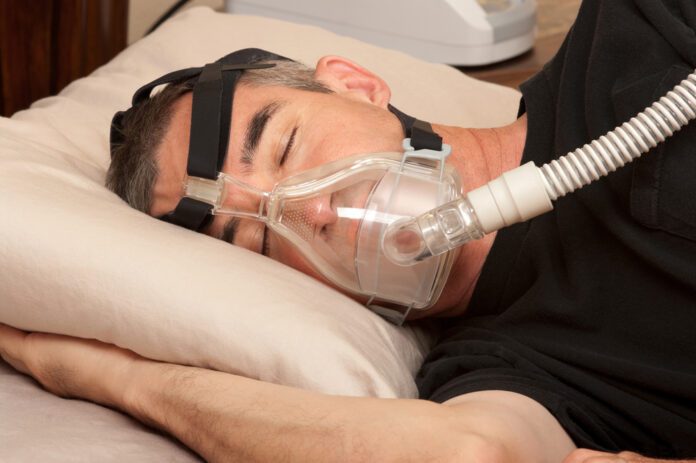Overview
Sleep apnea is a common sleep disorder characterized by brief interruptions of breathing during sleep. These episodes usually last 10 seconds or more and occur repeatedly throughout the night. People with sleep apnea will partially awaken as they struggle to breathe, but in the morning they will not be aware of the disturbances in their sleep. The most common type of sleep apnea is obstructive sleep apnea (OSA), caused by the relaxation of soft tissue in the back of the throat that blocks the passage of air. Central sleep apnea (CSA) is caused by irregularities in the brain’s normal signals to breathe. Most people with sleep apnea will have a combination of both types. The hallmark symptom of the disorder is excessive daytime sleepiness. Additional symptoms of sleep apnea include restless sleep, loud snoring (with periods of silence followed by gasps), falling asleep during the day, morning headaches, trouble concentrating, irritability, forgetfulness, mood or behavior changes, anxiety, and depression. Not everyone who has these symptoms will have sleep apnea, but it is recommended that people who are experiencing even a few of these symptoms visit their doctor for evaluation. Sleep apnea is more likely to occur in men than women, and in people who are overweight or obese.
Cause
When you sleep, all of the muscles in your body become more relaxed. This includes the muscles that help keep your throat open so air can flow into your lungs.
Normally, your throat remains open enough during sleep to let air pass by. Some people have a narrow throat. When the muscles in their upper throat relax during sleep, the tissues close in and block the airway. This stop in breathing is called apnea.
Loud snoring is a telltale symptom of OSA. Snoring is caused by air squeezing through the narrowed or blocked airway. Not everyone who snores has sleep apnea though.
Other factors also may increase your risk:
• A lower jaw that is short compared to your upper jaw
• Certain shapes of the roof of your mouth (palate) or airway that cause it to collapse more easily
• Large neck or collar size, 17 inches (43 centimeters) or more in men and 16 inches (41 centimeters) or more in women
• Large tongue, which may fall back and block the airway
• Obesity
• Large tonsils and adenoids that can block the airway
Sleeping on your back can also cause your airway to become blocked or narrowed.
Central sleep apnea is another sleep disorder during which breathing can stop. It occurs when the brain temporarily stops sending signals to the muscles that control breathing.
Symptoms
Typical symptoms include heavy snoring, excessive daytime sleepiness or fatigue, difficulty with concentration or memory, among many others. Untreated, sleep apnea can lead to serious health consequences.
Treatment
There are a variety of treatments for OSA – adults depending on an individual’s medical history and the severity of the disorder. Most treatment regimens begin with lifestyle changes, such as avoiding alcohol and medications that relax the central nervous system (for example, sedatives and muscle relaxants), losing weight, and quitting smoking. Some people are helped by special pillows or devices that keep them from sleeping on their backs, or oral appliances to keep the airway open during sleep. If these conservative methods are inadequate, doctors often recommend continuous positive airway pressure (CPAP), in which a face mask is attached to a tube and a machine that blows pressurized air into the mask and through the airway to keep it open. Also available are machines that offer variable positive airway pressure (VPAP) and automatic positive airway pressure (APAP). There are also surgical procedures that can be used to remove tissue and widen the airway. The U.S. Food and Drug Administration has approved a surgically implantable device placed in the upper chest that monitors a person’s respiratory signals during sleep and stimulates a nerve to send signals to a muscle to stimulate and restore normal breathing. Some individuals may need a combination of therapies to successfully treat their sleep apnea.
Exams and Tests
• Your health care provider will take your medical history and do a physical exam.
• Your provider will check your mouth, neck, and throat.
• You may be asked about daytime sleepiness, how well you sleep, and bedtime habits.
• You will need to have a sleep study to confirm OSA. This testing can be done in your home or in a sleep lab.
Other tests that may be performed include:
• Arterial blood gases
• Electrocardiogram (ECG)
• Echocardiogram
• Thyroid function studies
Source
https://www.ninds.nih.gov/Disorders/All-Disorders/Sleep-Apnea-Information-Page
https://www.sleepapnea.org/



